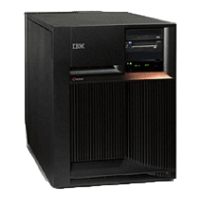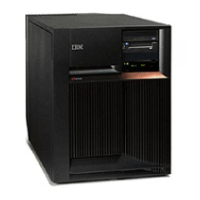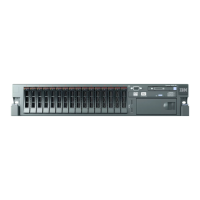Record the partition ID, partition name, operating system type, and version/release of the guest
partition(s) for later use.
This
ends the procedure.
Determine the release level of a guest partition
For use by authorized service providers.
Use this procedure to determine the release level of the operating system environment in a guest partition.
1. Go to the Primary partition system console or the console of the hosting partition for a guest partition.
For information on determining the hosting partition for a guest partition see “Determine the hosting
partition of a guest partition.”
Note: The hosting partition may not have a console session established via Telnet. In that case use
the ″Primary″ partition’s console.
2. From the SST or DST display select Work with system partitions—>Display partition
information—>Display partition operating environment.
3. At the Display Partition Operating Environment display, the operating system (Kernel) and the
operating system’s (Kernel’s) version level will be displayed.
Note: The guest partition must have been IPL’d at least once for the version to be displayed correctly.
Record the partition ID, partition name, operating system, and operating system version of the guest
partition for later use.
This
ends the procedure.
Determine the hosting partition of a guest partition
For use by authorized service providers.
Use this procedure to determine the partition ID and partition name of the hosting partition of a guest
partition.
1. Go to the Primary partition system console. From the SST or DST display, select Work with system
partitions—>Display partition information—>Display guest environment host information. The
hosting partition for a guest partition will be displayed.
2. Record the hosting partition information of the guest partition that you are working on for later use.
This
ends the procedure.
Determine the load source disk and alternate IPL device
For use by authorized service providers.
If you have a system configuration list that shows the load source disk unit and the alternate IPL device,
use that information. If not, use the following information and, when found, make a note of the locations
(see “Locations and addresses” on page 224).
Find the load-source disk on systems without mirrored protection
What you should know about load-source disks on systems with mirrored protection
Find the load-source disks on systems with mirrored protection
Alternate IPL device
Find the load-source disk on systems without mirrored protection: For use by authorized service
providers.
The load source disk is disk unit 1 in the system unit.
580 Hardware (Remove and Replace; Part Locations and Listings)

